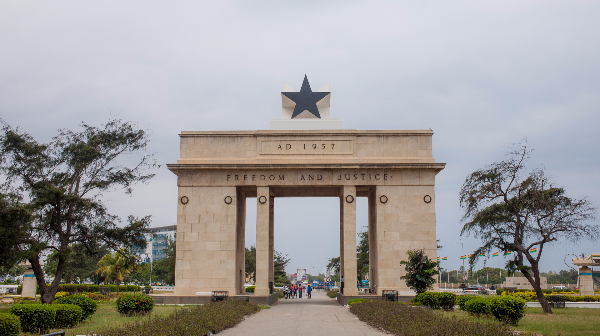About the Musical
"Today, we know all about how Africa is dying, but nothing about how Africa lives."
Henning Mankell;
The production of the musical (“Diary of a lost Baobab”) and its film adaptation should close another gap of knowledge about “the strangers” of Africa. It is an invitation to a journey to “the strange” of the cultures and histories of Africa.
Background of the stroy:
The Musical “Diary of a lost Baobab” will be performed on 7 stages by more than 500 professional actors, dancers, musician and acrobats from different cultures of Africa (for example the Mawuli Pan-African Dance Ensemble, National Symphony Orchestra of Ghana, African Harmonious Choir, Ghana Central Police Band, etc.) and makes the Musical to one of the biggest art-performances in Africa.
The piece attempts to -in opposite to the western civilization widespread “dark” and negative image as well often associated ”romanticizing good mood musical productions”- show a different perspective of Africa.
The display of the rich, colorful diversity of African cultures and elements (rites, ceremonies, festivals, believes etc.) should be reflect and imbedded in a historical review (pre-colonial times and empires, colonial oppression by the Europeans, fight for independence, post-colonial time and Africa today).
So beside the daily life, the importance of various African ceremonies, rites, believes and life-forms like marriage, extended-family, death etc. as well as social issues such as apartheid, migration, ethnic conflicts, corruption, slave trade, fight against oppression, etc. will be thermalized.
The Music-Dance-Theatre „The diary of a lost Baobab“, shows in six chapters Cultural dynamics, social processes of changes, a diversity of cultural life forms and multiple ways of development, as well of different problem-fields like corruption, regional civil wars, colonial wars, migration, elites interests on power, resources and richness. Its shows the relations between Africa and the rest of the world and try to display perspectives on the development in times of globalization and the future. At the same time will be presented different facets of rich and colorful African cultures and art, uncountable social, economic and political life-forms, witch lived and life with happiness parallel and unimpressed of the modern life and influence.
The story will be accompanied by historical elements of traditional, neo-traditional and modern African music (such as Mariam Makeba, Hugh Masekela, Fela Kuti, Tiken Jah Fakoly, Ofori Amponsah, Salif Keita, Angeique Kidjo, Cheb Khaled, Youssou Ndor, Oliver Mtudkudzi and many more).
Thus we find in this journey, a music concert, for example from African drum rhythms and diverse interpretations and mixtures of afro-blues, afro-jazz, afro-rock, funk, afro-reggae, afro-hip-hop, like African music genres such as High Life, Hip-Life, Coupe de Cale, Rai, etc., played by different musicians (like traditional music groups, the Ghana National Symphony Orchestra, choirs , brass band etc.). Here, the viewer embarks not only on the journey in other cultures and with that to a “different self-evident” but rather also -through a cultural comparison and own cultural questioning- a journey to himself.
Music:
The Musical is accompanied by highlights of the Music-history
of African traditional, neo-traditional and modern music. Newcomer and classical highlights of different music-forms from Africa, like for example Traditional Music, High Life, Afrobeat, Old School, Hip Life, Zogolou, Coupe de Cale, African Jazz, Afro-Blues, Funk and Soul etc. - like Mariam Makeba, Hugh Masekela, Angelique Kidjo, Fela Kuti, Salif Keita, Alpha Blondy, Lucky Dube, Tiken Jah Fakoly, Youssou N’Dour, Ofori Amponsah, Fally Ipupa, DJ Lewis and much more - are played by different traditional groups, Symphony Orchestra, Christian and Muslim choral, Brass Band, Acapella Band, DJ´s, Police Orchestra etc. Besides that, the musicians will place their own creative pieces in the audience. And tells us a lot about the real roots of the contemporary music in the world…
Of course, my music comes from Africa, like all good music has as its origin. From Europe, the waltz and the polka come. The rest comes from Africa.
Carlos Santana
Form of presentation:
With Pylades of ancient Rome, the ballet master John Weaverand actor David Garrick the 18th century, Joseph
Grimaldi the inventor of the clown and the Expression theorists Marcel Maceau and Etienne Decroux of the 19th
century, the situation comedie master of silent film Charlie Chaplin of the 30´s and the Break Dance of the 90´s we
follow the footsteps of more than 2000 years theater forms, a mix of pantomime, expression-dance, Movement
Theater, Narrative ballet, Contemporary and Modern Dance. With a high artistic level actors, acrobats and dancers tell us only by their presentation ability of gestures and facial expressions, the stories and backgrounds of the script. Thereby is hunts one scenic-climax the next one, in which the dialogues of the scenes are performed by some raging drums, a screaming Orchestra, a howling Coir or a melodic poem. Performances of this kind -without text- were often necessary if a social and political environment of censorship and the risk of political expression and social criticism resulted in grave sanctions and penalties. To the contrast of the courtyard-theater of the elites in the 18th century found that kind of artistic presentation a big boom of a large crowd at the lower classes - because it came “from the gutter”. Moreover pantomimic presentation since the 18th century is associated with limitless freedom, truth and naturalness – of which Africa is still “accused”.


